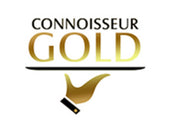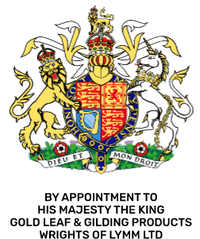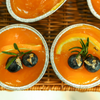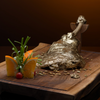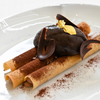VJ Day and the Sparkle of Edible Gold Leaf in Post-War Britain
- by sam@wrightsoflymm.co.uk User
On 15th August 1945, Victory over Japan Day — known simply as VJ Day — marked the end of the Second World War. Across Britain and the wider Commonwealth, the announcement was met with tears, cheers, and a collective exhale of relief after six long years of global conflict. Today, VJ Day remains a poignant moment to reflect on both the sacrifices made and the ways society rebuilt itself after the war. And, perhaps unexpectedly, part of that rebuilding story involves the dazzling return of edible gold leaf, gold dust, and silver leaf to British dining tables.
What is VJ Day?
VJ Day commemorates Japan’s surrender to the Allied forces, officially bringing World War II to a close. While VE Day (Victory in Europe) was celebrated earlier that year in May, millions were still fighting in the Pacific theatre. The war in Asia was brutal, and the end was hard-won.
In Britain, the news broke in the morning, and people flooded the streets to celebrate. Bunting went up, music played, and spontaneous parties filled town squares. However, for many, the joy was tempered with remembrance. Nearly every family had experienced loss, and the war’s shadow lingered. VJ Day is remembered not only for its jubilation but for its solemn recognition of peace hard-earned.
Why VJ Day is Remembered
VJ Day is important because it represents the true end of WWII — the day global conflict officially stopped. It’s a reminder of resilience, unity, and the enormous cost of freedom. Annual services, veterans’ parades, and moments of silence to honour those who served and those who did not return.
For post-war Britain, VJ Day also marked the beginning of a new chapter: the long road to recovery. Rationing remained for years after 1945, and luxuries were scarce. Yet, amid austerity, people longed for moments of beauty, comfort, and celebration — and that’s where something unexpected came back into focus: gilded food and drink.
The Return of Edible Gold in Post-War Britain
In the late 1940s and 1950s, as Britain began to heal, edible gold leaf and silver leaf slowly reappeared in luxury dining. During the war, gold and silver decorations for food were virtually non-existent — rationing, trade restrictions, and public austerity made such embellishments impractical. But in the post-war years, these shimmering touches became symbols of hope, prosperity, and looking forward to brighter days.
Gold Leaf: A Symbol of Celebration
Gold leaf — especially 23ct and 24ct varieties — has been used for centuries to decorate cakes, pastries, and confectionery. In the post-war context, it was more than mere decoration; it was an act of optimism. A wedding cake adorned with gold flakes or a dessert sprinkled with gold dust wasn’t just visually stunning — it was a statement that better times had arrived.
Families saving up for special occasions would splurge on a tiny sheet of goldleaf to make their celebration truly memorable. Even the smallest application of edible gold could transform a simple post-war sponge cake into something magical.
Silver Leaf and Silver Dust: Elegance in Simplicity
Alongside gold, silver leaf, silver flakes, and silver dust returned to the patisserie scene. They offered a cooler, moonlit glamour that contrasted with gold’s warm glow. In an era where glamour was in short supply, these delicate metallic accents felt extravagant yet refined — the perfect finish for celebration chocolates, marzipan fruits, or iced petit fours.
Edible Gold: From Rationing to Luxury
It’s worth remembering that edible gold and silver aren’t consumed for flavour — they’re tasteless, but visually spectacular. After years of drab wartime meals, the sight of edible gold glistening on a trifle was almost revolutionary. These decorative touches harked back to Britain’s long culinary heritage, where monarchs and aristocrats had long used gold to impress guests.
Post-war, this heritage felt like a connection to better times, and incorporating even the tiniest piece of 23ct or 24ct goldleaf was a way of reclaiming joy.
Wrights of Lymm: Continuing the Tradition
Here at Wrights of Lymm, we’re proud to carry on this tradition, offering the same luxurious materials that symbolised celebration in post-war Britain. Whether you’re adding gold flakes to champagne, sprinkling gold dust over a dessert, or applying silver leaf to a wedding cake, you’re part of a story that stretches from royal banquets to the humble kitchens of families marking VJ Day’s peace.
Our edible gold and silver products are made to the highest standards, ensuring they’re safe, authentic, and beautiful — just as they were when they helped Britain sparkle again after the darkness of war.
Remembering VJ Day with a Touch of Gold
VJ Day isn’t just a date in history — it’s a reminder of the resilience of the human spirit and the value of peace. And just as those post-war families looked for ways to bring beauty back into life, you too can mark special occasions with something extraordinary.
A sprinkling of gold dust, a sheet of 23ct or 24ct goldleaf, or the shimmering coolness of silver flakes can turn a simple moment into a treasured memory. In the end, it’s not just about decoration — it’s about celebration.
